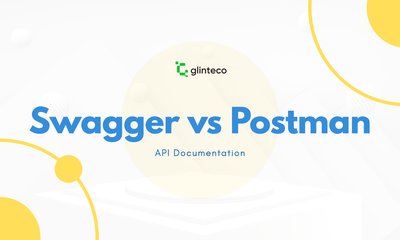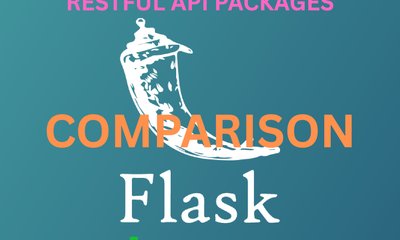Swagger so với Postman: Công cụ nào phù hợp với quy trình làm việc API của bạn?
By hientd, at: 11:20 Ngày 13 tháng 12 năm 2024
Thời gian đọc ước tính: __READING_TIME__ phút


Khi xây dựng API, việc có những công cụ phù hợp có thể ảnh hưởng đáng kể đến quy trình làm việc, năng suất và chất lượng API của bạn. Hai trong số những công cụ phổ biến nhất trong hệ sinh thái phát triển API là Swagger và Postman. Mặc dù cả hai công cụ đều mạnh mẽ theo cách riêng của chúng, nhưng chúng phục vụ cho các giai đoạn khác nhau trong quá trình phát triển API và có những điểm mạnh độc đáo. Trong bài viết này, chúng ta sẽ so sánh Swagger và Postman để giúp bạn quyết định công cụ nào phù hợp với quy trình làm việc API của mình.
Swagger là gì?
Swagger là một bộ công cụ toàn diện được xây dựng xung quanh thông số kỹ thuật OpenAPI. Nó tập trung vào thiết kế, phát triển, lập tài liệu và kiểm thử API. Bộ công cụ bao gồm các công cụ như:
- Swagger Editor: Để thiết kế và trực quan hóa thông số kỹ thuật API.
- Swagger UI: Để tạo tài liệu API tương tác.
- Swagger Codegen: Để tự động tạo các mã nguồn server và client SDK.
Các tính năng chính của Swagger
- Tài liệu tương tác: Các nhà phát triển có thể kiểm tra các điểm cuối API trực tiếp trên trình duyệt.
- Hỗ trợ thông số kỹ thuật OpenAPI: Đảm bảo API của bạn được xác định rõ ràng và chuẩn hóa.
- Tạo mã: Tạo mã client và server bằng nhiều ngôn ngữ.
- Phương pháp thiết kế trước: Lý tưởng để lập kế hoạch và thiết kế API trước khi triển khai.
Khi nào nên sử dụng Swagger
- Bạn cần một quy trình làm việc thiết kế trước để lập kế hoạch và lập tài liệu cấu trúc API của mình.
- Bạn muốn tuân thủ tiêu chuẩn OpenAPI cho thông số kỹ thuật API của mình.
- Bạn cần tài liệu tương tác cho phép các nhà phát triển khám phá và kiểm tra API.
- Bạn cần tạo thư viện client hoặc mã nguồn server từ thông số kỹ thuật API của mình.
Postman là gì?
Postman là một nền tảng phát triển và cộng tác API. Nó được sử dụng rộng rãi để kiểm thử API, tạo yêu cầu, tự động hóa quy trình làm việc và tạo tài liệu. Mặc dù Postman hiện hỗ trợ thiết kế API thông qua OpenAPI và các định dạng khác, nhưng điểm mạnh cốt lõi của nó nằm ở việc kiểm thử và gỡ lỗi API.
Các tính năng chính của Postman
- Trình tạo yêu cầu: Dễ dàng tạo và gửi yêu cầu API (GET, POST, PUT, DELETE).
- Kiểm thử và tự động hóa: Xây dựng bộ kiểm thử và tự động hóa quy trình làm việc bằng script.
- Bộ sưu tập API: Sắp xếp các điểm cuối API thành các bộ sưu tập có thể chia sẻ để cộng tác nhóm.
- Tài liệu: Tự động tạo tài liệu tương tác từ các bộ sưu tập.
- Máy chủ mô phỏng: Mô phỏng phản hồi API để kiểm tra ứng dụng trong quá trình phát triển.
Khi nào nên sử dụng Postman
- Bạn tập trung vào việc kiểm thử API và gỡ lỗi các điểm cuối.
- Bạn muốn tự động hóa quy trình làm việc API bằng script trước yêu cầu và kiểm thử.
- Bạn cần một nền tảng cộng tác để chia sẻ API và tài liệu với nhóm của mình.
- Bạn đang tìm kiếm một công cụ tất cả trong một để kiểm thử, gỡ lỗi và lập tài liệu API.
Công cụ nào phù hợp với quy trình làm việc API của bạn?
Chọn Swagger nếu:
- Quy trình làm việc của bạn là thiết kế trước và bạn ưu tiên tạo cấu trúc API mạnh mẽ trước khi phát triển.
- Bạn cần tài liệu thân thiện với nhà phát triển tương tác tuân thủ thông số kỹ thuật OpenAPI.
- Bạn cần tạo mã cho mã nguồn server và client SDK.
- Nhóm của bạn coi trọng việc tuân thủ các tiêu chuẩn ngành cho định nghĩa API.
Chọn Postman nếu:
- Quy trình làm việc của bạn tập trung vào việc kiểm thử và gỡ lỗi API sau khi phát triển.
- Bạn muốn một nền tảng tất cả trong một để tạo yêu cầu, kiểm thử và lập tài liệu.
- Bạn cần một công cụ cộng tác để chia sẻ API và xây dựng quy trình làm việc với nhóm của mình.
- Bạn đang tìm kiếm một công cụ thân thiện với người mới bắt đầu hoạt động mà không cần kiến thức OpenAPI trước đó.

Sử dụng Swagger và Postman cùng nhau
Mặc dù Swagger và Postman nổi bật ở các lĩnh vực khác nhau, nhưng chúng có thể bổ sung cho nhau một cách hiệu quả. Đây là cách:
- Sử dụng Swagger để thiết kế, định nghĩa và lập tài liệu API của bạn.
- Xuất thông số kỹ thuật OpenAPI từ Swagger và nhập nó vào Postman để kiểm thử và gỡ lỗi.
- Chia sẻ bộ sưu tập Postman với nhóm của bạn để kiểm thử và tự động hóa API cộng tác.
Kết luận
Swagger và Postman phục vụ các mục đích riêng biệt nhưng chồng chéo nhau trong vòng đời phát triển API. Swagger lý tưởng cho quy trình làm việc thiết kế trước, cung cấp hỗ trợ OpenAPI mạnh mẽ, tài liệu tương tác và tạo mã. Mặt khác, Postman nổi bật trong việc kiểm thử, gỡ lỗi và cộng tác, biến nó thành một công cụ không thể thiếu cho người dùng và người kiểm thử API.
Đối với nhiều nhóm, giải pháp tốt nhất là sử dụng cả hai công cụ cùng nhau, tận dụng Swagger để thiết kế và lập tài liệu và Postman để kiểm thử và cộng tác. Bằng cách hiểu những điểm mạnh độc đáo của chúng, bạn có thể tối ưu hóa quy trình làm việc API và cung cấp API chất lượng cao một cách hiệu quả.
Tại Glinteco, chúng tôi sử dụng Postman rất nhiều vì chúng tôi có thể chia sẻ một số trường hợp kiểm thử nhiều lần.





